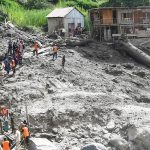Integrated farming is a holistic approach that blends different agricultural activities like growing crops, raising livestock, aquaculture, and forestry on the same piece of land. The goal is to boost productivity and promote sustainability by making the most out of available resources. It focuses on recycling waste, optimizing resource use and creating multiple sources of income, which ultimately builds a more resilient and environmentally friendly farming system. It is suitable for the Indian farming system due to the small size of average land holding. Also it gives the Indian farmer a reliable source of income throughout the year.
This may protect the farmer in times of natural calamities like droughts and floods which are more prone to occur under Indian conditions as the Indian agriculture is mainly rain fed which depends on monsoon which is often erratic. Due to many a times there is excessive rainfall damaging crops and agriculture while many a times there is less rainfall causing droughts leading to crop failure. This often leads to farmer suicides due to economic derangement. All this can be prevented or minimized by adapting to integrated farming system in which the farmer will derive the sustenance from other sources like livestock.
Methodology and Procedures
- Assessment & Planning: The first step in integrated farming is to carefully look at what the farm has to offer. This means evaluating things like soil quality, how much water is available, and the overall climate of the area. Next, it’s important to figure out which crops and livestock will work well together. This is about creating a combination that will thrive naturally. Finally, develop a strategic plan that outlines how everything will be integrated, how resources will be allocated and what you hope to achieve.
- Implementation Steps: Start with small-scale pilot projects to see how well the integration works in real conditions. Then, gradually expand the integrated systems. Keep a close eye on how all the elements are performing and make changes as needed to improve their efficiency and productivity.
Different Types of Integrated Farming
- Crop-Livestock Integration: This approach involves growing crops and raising livestock on the same land. The crops provide feed for the livestock, while the livestock produce manure that enriches the soil. For instance, you might grow maize alongside cattle. The maize stalks can be fed to the cows, and their manure can be used as fertilizer for the maize fields. In addition along with the cows other livestock like sheep, goats and poultry can be included to provide more income and thus to maximize the benefits of Integrated Farming System.
- Crop-Aquaculture Integration: This method combines crop farming with fish cultivation. The nutrient-rich water from fish ponds can be used to irrigate crops, which boosts their growth. A common example is growing rice in a field where fish are also raised. The fish provide natural fertilizer for the rice plants, creating a mutually beneficial environment.
- Livestock-Aquaculture Integration: This system brings together livestock farming and fish culture. Waste from the livestock serves as a natural feed for the fish, while the sludge from the fish ponds can be used as a fertilizer for the fields. Raising ducks and fish together is a good example. The ducks’ droppings fertilize the pond, which in turn supports the growth of the fish.
- Agro forestry: Agro forestry involves growing trees and shrubs alongside crops or livestock. Trees help prevent soil erosion, improve soil fertility, and offer shade for both crops and animals. A practical example might be planting fruit trees around a vegetable field or letting livestock graze in an orchard. This way, the trees benefit the soil and provide shade while also yielding fruit. This integrated approach not only maximizes productivity but also supports a more sustainable way of farming that can adapt to changing conditions and reduce waste.
Importance of Integrated Farming System (IFS)
Integrated Farming Systems (IFS) can help stabilize production, making it more sustainable and less vulnerable to the impacts of climate change. Integrated Farming System is particularly resilient to climate change, accommodating extreme weather through diversification and efficient resource use. Agro forestry can regulate microclimates and help reduce carbon emissions. By increasing organic matter, reducing erosion, and enhancing nutrient cycling, Integrated Farming System (IFS) contributes to healthier soils that support thriving ecosystems. It can help in fostering farming systems that can adapt to environmental and economic changes, promoting long-term sustainability. These systems are not only cost-effective but also promote environmentally friendly practices that benefit both farmers and the planet.
Integrated Farming System can boost livelihoods by increasing food production and productivity, helping to reduce income disparities among farmers. The system can provide the regular and sustainable source of employment to the farmer round the year as during the lean periods of agriculture the livestock sources of income can suffice the farmer. The integrated farming system is an important source of women empowerment. With this system the women being an important part can help in the farming system and generate their income by the sale of milk, ghee, eggs and other products related to the system. The livestock component of integrated Farming system like horse and bullocks can also help the marginal farmer as a source of transport for his farm produce and the bulls can help the farmer for ploughing his small land holding or pulling water for irrigation. It can help in promoting recycling waste and conserving resources in a way that is both cost-effective and sustainable. By combining various agricultural activities, Integrated Farming System encourages diversification. This approach minimizes risks associated with monoculture and enhances resilience to pests, diseases, and market shifts.
Integrated Farming System maximizes productivity by efficiently using resources like land, water, and nutrients, creating a closed-loop system. For example, crop residues can be used as animal feed, and livestock manure can fertilize crops. Integrated systems create habitats for various plant and animal species, promoting biodiversity. Agro forestry, for instance, maintains wildlife corridors and supports beneficial insects. By generating multiple income streams, Integrated Farming System can enhance farm profitability and stability, reducing dependence on any single market and boosting farmers’ resilience to price fluctuations. Integrated Farming System relies less on synthetic fertilizers and pesticides, emphasizing natural processes and nutrient recycling. This not only lowers input costs but also minimizes environmental pollution. The System aligns with organic farming principles by promoting sustainable practices, avoiding synthetic chemicals, and encouraging biodiversity and soil health. The system is important in terms of aesthetic value and appears to be more appealing and satisfying to the farmer and his family.
Integrated Farming System supports rural development by creating jobs, empowering smallholder farmers, and strengthening community ties. It fosters knowledge sharing and skill development among farmers. The system can support farming practices such as rainwater harvesting and drip irrigation helps conserve water and promote efficient management, crucial in drought-prone regions. It can provide essential ecosystem services like pollination, pest control, and soil conservation, which are vital for sustainable agriculture and biodiversity. Integrated Farming System can help in minimizing the malnutrition and other nutrient deficiencies particularly among poor and marginalized farmers and their children as the integrated farming system if adopted can provide valuable protein sources in the form of milk, eggs, meat and fish besides the main plant protein and energy sources.
Conclusion
The Integrated Farming System can go a long way in addressing the current burning challenges of unemployment, poverty of marginal farmers, economic independence, women empowerment, climate and environmental crisis, protein and energy malnutrition, soil health, migration of rural to urban areas, depression and suicide of farmers, market fluctuation of agricultural products, aesthetic degradation of ecosystems and many more.
(The Author is Head, Division of Clinical Veterinary Medicine, FVSc Shuhama, SKUAST Kashmir. Feedback: [email protected])









